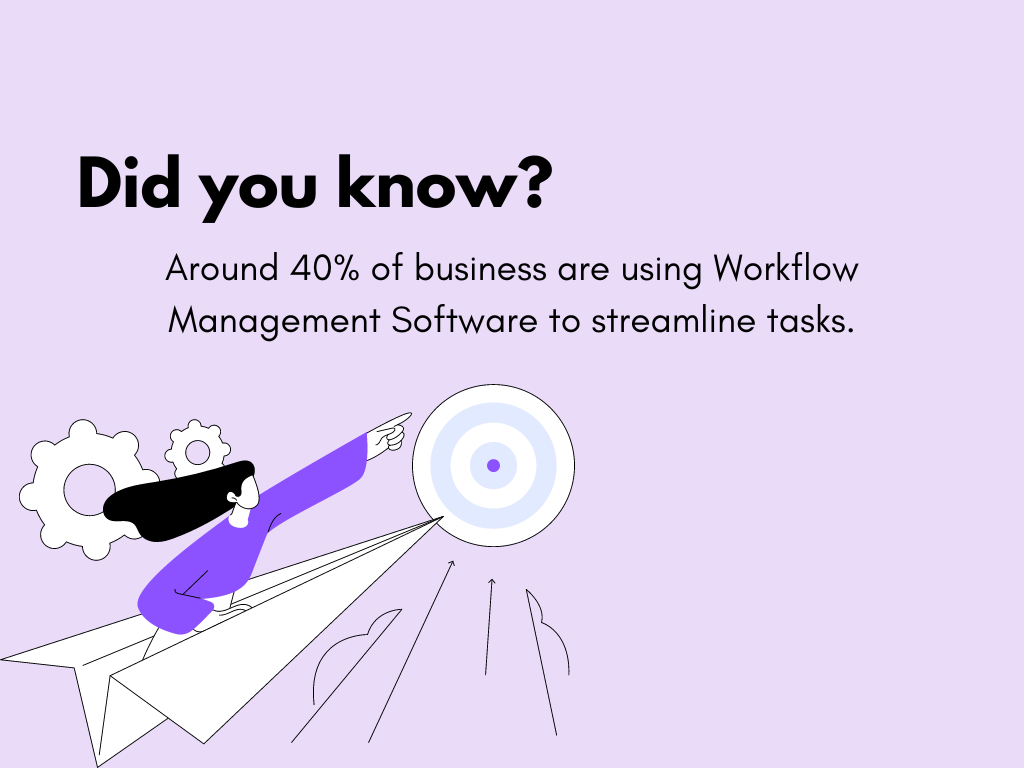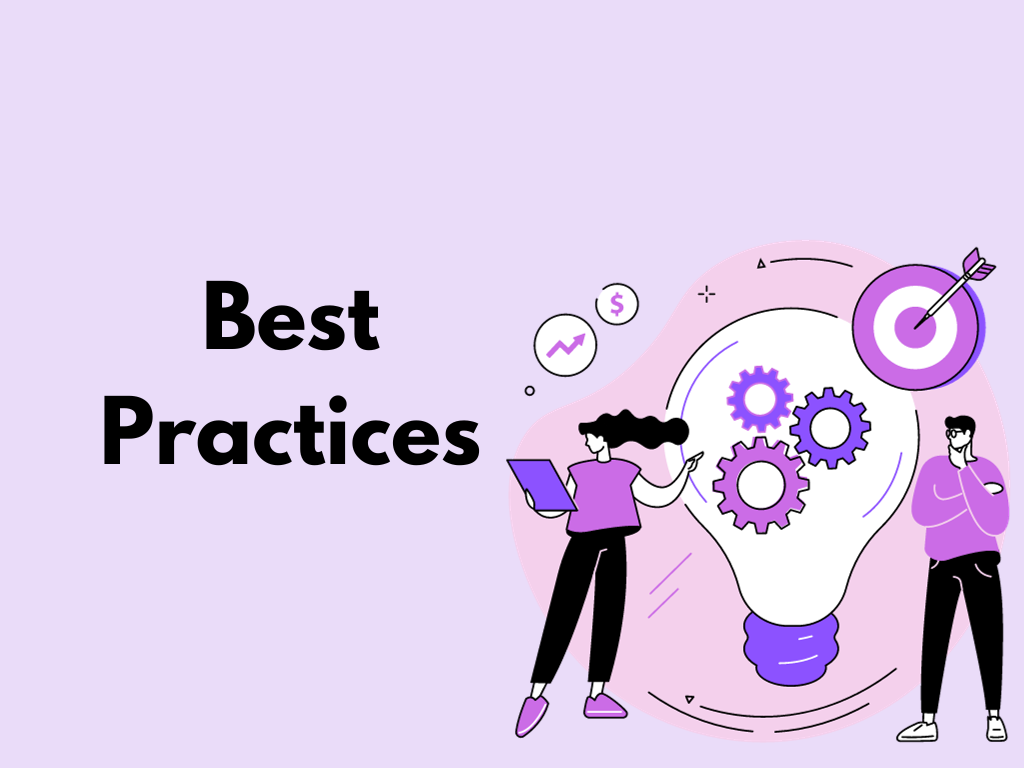Table of Contents:
- What Is Workflow Management and Why Is It Important?
- Core Principles of Effective Workflow Management
- Choosing the Right Workflow Management Software
- Implementing New Workflows Across Your Organization
- Best Practices for Ongoing Workflow Management
Introduction
So you've decided to take your productivity to the next level by embracing workflow management.
That's awesome - you're about to change your life for the better. But where do you start?
There are tons of options, tools, and methodologies out there. How do you cut through the noise and build a system that works for you?
Don't worry, you've come to the right place. This guide will walk you through everything you need to know to become a workflow management master.
We'll start with the basics - what exactly workflow management is and why it's so important.
Then we'll explore some of the most popular techniques and tools to help you organize your tasks and priorities.
By the end, you'll have a customized workflow management plan in place and be well on your way to reaching peak productivity and efficiency. Sound good? Then let's dive in!
What Is Workflow Management and Why Is It Important?

What exactly is workflow management and why should you care?
Simply put, it's the process of optimizing and automating the steps required to complete a task or project.
When done right, it can save you a ton of time and headaches.
Workflow management helps streamline business processes by mapping out each step in a visual way.
You analyze how work flows through your organization, then redesign it to maximize productivity and reduce wasted effort.
Things like eliminating bottlenecks, simplifying routines, and ensuring consistency.
For example, say you have a multi-step process for onboarding new clients.
A good workflow management system would:
- Map out each task in the proper sequence
- Assign ownership and deadlines for completing them
- Automate what you can (email templates, online forms, etc.)
- Give visibility into the overall progress and status
The benefits of solid workflow management are huge:
- Increased efficiency. Less duplication of work and fewer mistakes. Tasks get done right the first time.
- Improved communication. All team members have clarity on their responsibilities and what others are working on.
- Better accountability. You have transparency into where work is getting held up so you can keep projects on schedule.
- Higher quality work. Standard procedures mean outputs don't vary in quality depending on who's doing the work.
- More scalability. As your business grows, clearly defined processes allow you to effectively train new team members and maintain high standards.
- Customer satisfaction. The effective implementation of workflow management can greatly contribute to improving customer interactions, streamlining processes, and fostering customer satisfaction.
Implementing a streamlined system for recurring tasks and key processes could make a massive impact on your productivity and bottom line.
Why not start improving your workflow management today?
Core Principles of Effective Workflow Management

To run an efficient workflow, there are a few core principles you should keep in mind:
Prioritize Important Tasks
Focus on high-impact activities that move the needle. Don't get bogged down in busy work or chasing every new idea.
Identify the key items that need to get done each day and week to keep your projects and commitments on track.
Design the Workflow to Minimize Distractions
Identify the sources of potential distractions by taking a survey from the workforce, evaluating the work environment, or studying the workflow patterns.
After identifying distractions, the workflow should be designed to minimize or eliminate them.
Automate When Possible
Look for repetitive tasks that can be automated or streamlined—things like using templates, macros, or project management software to handle routine parts of your workflow.
The time savings can add up quickly.
Review and Revise
Take time each week to evaluate what's working and not working in your current workflow.
See if any bottlenecks are holding you back or new tools that could help increase your efficiency.
Don't be afraid to tweak your system and try different approaches. Continuous improvement is key.
With practice, these principles can become second nature. But making the effort to build better habits and optimize your workflow is worth it.
You'll get more done in less time and with less stress. And that's a win all around!
Choosing the Right Workflow Management Software

Choosing the right workflow management software is crucial to streamlining your processes and boosting team productivity.
With so many options out there, it can be tough to decide what will work best for your needs. Here are some factors to consider:
Ease of Use
Look for a platform that is intuitive and easy to learn. If the software has a steep learning curve, your team will struggle to adopt it and it won’t achieve the efficiency gains you’re after.
Read reviews from current users to get a sense of the user experience. Software with drag-and-drop features, pre-built templates and an uncluttered interface tend to be the most user-friendly.
Key Features
Determine which capabilities are most important for your workflows like task management, document sharing, project planning, time tracking, or resource management.
Some tools are more robust, while others focus on just a few core functions. Choose a platform with the specific mix of features your team needs.
Integrations
See what third-party apps and services the software integrates with, like Slack, G Suite, Office 365, or your CRM.
Integrations allow you to automatically sync data between systems, reducing manual data entry and providing a more cohesive experience for users. The more integrations offered the better.
Pricing
Compare pricing models like monthly subscriptions, annual contracts, or pay-as-you-go to find an option that suits your budget.
Some tools are free for small teams while enterprise-level platforms can cost thousands per month.
Look for a solution that scales with your needs and offers a free trial so you can test it out first.
Mobile Web Friendliness
As our world moves increasingly towards mobile technology, the way we work has evolved too.
For teams on the go, look for workflow management software with mobile web friendly so you can access tasks, files, and projects from anywhere.
The software should have a clean, intuitive, and user-friendly interface on mobile devices, facilitating effortless management of tasks without any fuss.
Doing thorough research upfront helps ensure you choose a platform you'll be happy with for years to come.
One tool you should considered is Sanka, the ultimate workflow management software designed to streamline your work processes with just a few clicks.
Whether it's for your sales, marketing, recruiting activities, or day-to-day operations like emails, invoices, and meeting notes, Sanka is the easiest and smartest solution.
Loved by leaders and trusted by top brands like Pizza Hut, Sanka is the key to unlocking seamless, automated workflows.
Implementing New Workflows Across Your Organization

Once you’ve defined your workflows and processes, it’s time to roll them out to your team. This is often easier said than done.
People generally don’t like change, so you’ll need to get everyone on board to make the transition as smooth as possible.
Communication is Key
Explain the reasons behind the new workflows clearly and thoroughly. Have one-on-one meetings or group discussions to address any questions or concerns.
Be transparent about how the changes will impact your team members’ day-to-day work.
The more people understand why new workflows are being implemented, the more likely they are to buy in.
Provide Adequate Training
Don’t just tell people about the new workflows, show them. Create training materials like video tutorials, screenshots, and cheat sheets to walk everyone through the steps.
Set up live or virtual training sessions where team members can follow along. Consider assigning mentors or “workflow experts” who can guide as people start adapting to the new processes.
Start with a Pilot Group
Rather than forcing an entire organization to change at once, implement new workflows with a smaller test group first.
Work out any kinks or issues and make adjustments before rolling them out company-wide.
Members of the pilot group can also serve as champions to help convince others of the benefits.
Monitor, Evaluate, and Refine
Once new workflows have been launched, closely track how they’re working. Look for any bottlenecks or inefficiencies and make improvements.
Survey your team members to get their feedback and see what’s working and what could be better. Be open to modifying workflows over time based on real-world experience.
With the right preparation and management, new workflows can positively impact your business.
However the key is gaining your team’s buy-in through open communication and providing the necessary tools and support to ensure success.
Keep at it - the rewards of improved productivity and efficiency will make all your efforts worthwhile!
Best Practices for Ongoing Workflow Management

Once you have a solid workflow management process in place, it’s important to establish best practices to keep things running smoothly. Here are some tips for ongoing workflow management:
Review and Revise
Nothing is set in stone, so review your workflows regularly and make changes as needed.
Maybe a new tool emerges that can automate a manual process or team members have feedback to improve a workflow.
It’s a good idea to schedule workflow reviews every 3-6 months.
Keep Documents Up to Date
Ensure any documents like process maps, checklists, or guides are kept up to date with the latest workflow steps and information.
Outdated information can lead to errors, miscommunications, and inefficiencies.
Provide Training
As workflows change or new team members come on board, offer training to ensure everyone understands the proper workflows and their specific responsibilities.
This can prevent confusion and help identify any workflow issues.
Monitor Metrics
Look for ways to measure key metrics to monitor the effectiveness of your workflows.
Things like task completion rates, error rates, throughput, and cycle times can help identify bottlenecks or other opportunities for improvement. Make adjustments as needed based on the metrics.
Automate When Possible
If any repetitive, manual steps can be automated, take advantage of tools to streamline the workflow.
Automation reduces the chance of human error and frees up your team to focus on more important, strategic work.
However, be careful not to over-automate, as human review and oversight are still important.
Continuously Improve
The key to successful workflow management is continuous improvement. Keep looking for new ways to optimize, simplify, and improve your workflows over time.
Small tweaks and changes can have a big impact on productivity, efficiency, and outcomes. Stay on top of new tools and strategies to enhance your workflow management. Continuous improvement is key.
Conclusion
You now have all the tools you need to become a workflow management master. The key is simply putting in the effort to implement what you've learned.
Start with evaluating your current processes and looking for opportunities to improve.
Then pick a workflow management system that suits your needs and begin mapping out how you want work to flow through your team.
It will take time to get the hang of it, but stick with it. Once you've got a good system in place, you'll wonder how you ever functioned without it.
Your productivity and efficiency will soar, collaboration will improve, and you'll have a clear path to achieving your goals. So don't delay - dive in and optimize your workflow today!
With practice and persistence, you'll be managing workflows like a pro in no time.








